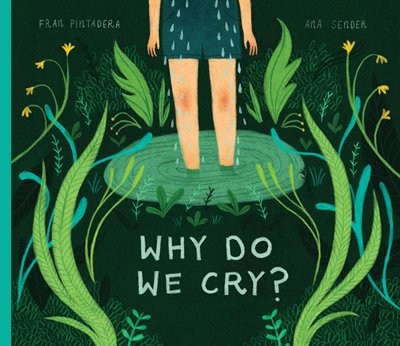This month's Book Nook topic is...
Relating to Children's Experiences with Why Do We Cry?

One of the most effective ways to help your child understand a story is to relate what’s happening in the book to your child’s existing knowledge and experiences. When your child thinks about a similar situation that he or she was in, or thinks about information they already know on a topic, they can better understand the events in the story and how they relate to the characters’ feelings and motivations. These ideas are often not stated explicitly in the book but are crucial for understanding the story.
Let’s get started!
The Book:
Why Do We Cry? by Fran Pintadera and Ana Sender
Why we picked it
In this book, a child named Mario asks his mother why people cry. They explore all sorts of possible reasons a person could cry. This allows for many opportunities to talk about your child’s experiences since most children can relate to feeling sad, angry or confused.
How to relate the story to your child's knowledge and experiences
You can relate the story to your child's experiences in two ways:
1. Make Comments
Make comments that link the story to your child’s life. Unlike questions, comments don’t require a response. But if you make a comment that relates to something your child has experienced, and then pause and wait for a few moments, chances are your child will want to add their own thoughts!
In Why Do We Cry?, the author gives possible explanations for crying, such as “We cry because, sometimes we don’t understand the world.” These are abstract ideas that you can make more concrete for your child by relating to their own experiences. For example, you could say, “Sometimes I’ve seen you cry when you were a bit confused. Like yesterday, when you couldn’t get your toy airplane to work.” Or, “It can be really frustrating when something isn’t going the way we want it to. Like when you spilled your orange juice, and there wasn’t any left in the container.”
After you make a comment linking the story to your child’s life, wait and see what they have to say. Follow their lead by responding to what they say, and you’ll find there are many ways to relate the book to their experiences and knowledge.
Comments like these, and the conversations that come from them, make the meaning of the story much clearer for your child because they now have a concrete example from their own life.
2. Ask Questions
By the second or third time you read the book, your child will have a basic understanding of the story. This is a good time to start pausing to ask questions that get your child thinking and deepen their understanding.
When you see that your child is interested in a particular part of the story, ask a question that links what's happening at that moment with something your child has experienced. Here are some examples:
- If your child points to the picture of the angry storm cloud, or makes a comment about it, you could ask something like, “Have you ever been so angry that you needed to cry? Did crying make you feel better?”
- If you notice your child paying close attention to the picture of the woman shouting, you could ask, “Does it help you to scream and shout?” or, “Are there times when screaming and shouting makes you feel better?"
- If your child points or talks about the picture of the large wall, you could ask, “Have you ever had to do something that seemed really difficult? How did that make you feel?”
Questions like these allow your child to draw connections between themself and the story, which really strengthens their understanding.
Happy reading!
More Resources
The strategies in this Book Nook post are drawn from Hanen’s practical, research-based guidebooks for building emergent literacy. Explore the links below to learn more about how these guidebooks can support you.
For Parents I'm Ready! guidebook
I'm Ready! guidebook
For Educators ABC and Beyond guidebook
ABC and Beyond guidebook
